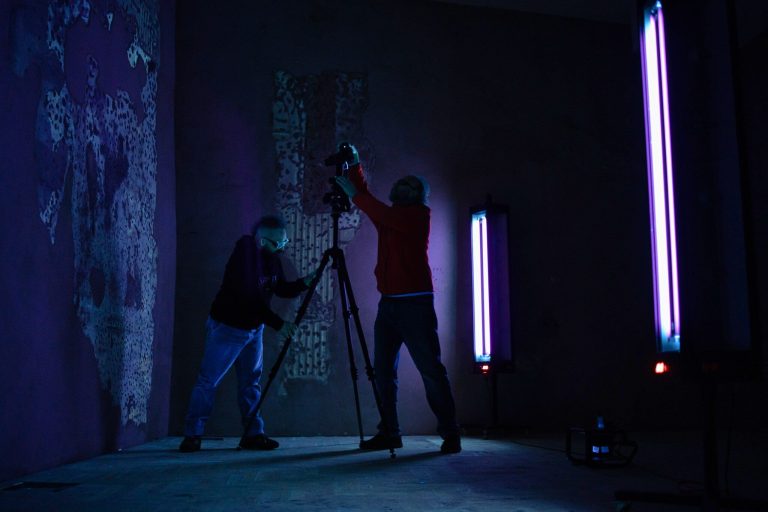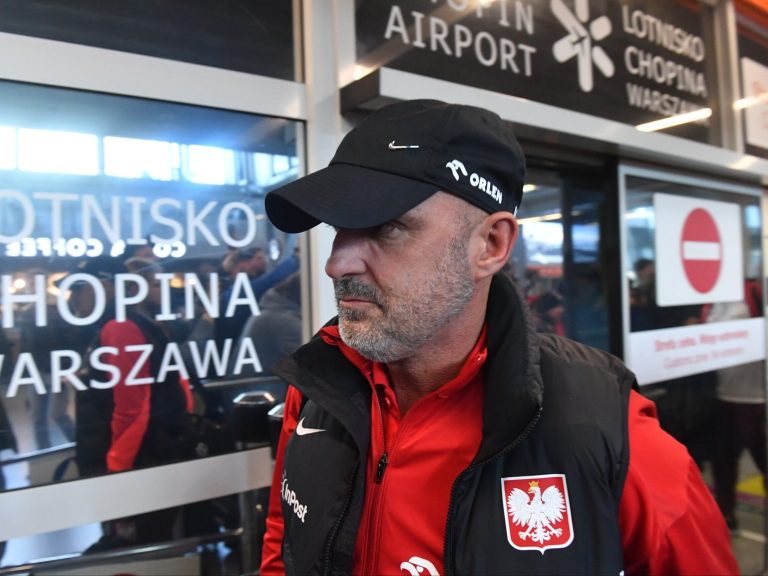“Polish Edison” from Tarnów. Over 100 patents, foreign offices and an untimely death

Jan Szczepanik, working as a village teacher, watched the work of weavers and wondered how to speed it up. His invention turned out to be a hit, orders came from all over the world. He was even visited by Mark Twain, who, apart from writing, dabbled in business. Nothing came of the collaboration, but the fascinated Twain devoted a story to “Galician Edison”. Nothing wrong with the title.
The weaving of one square meter of each of the tapestries, ordered by Zygmunt August in the Brussels workshops to decorate the Wawel Castle, took about two months, provided that 3-4 weavers were working at the same time. To this day, the tapestries are one of the most important monuments of the Jagiellonian period and allow you to appreciate the craftsmanship of craftsmen, but at the turn of the 19th and 20th centuries, what mattered was the efficiency and speed of work. Only the wealthiest could afford hand-woven tapestries, but the market needed machine production.
Such as the photoelectric method of weaving patterns, which was developed in 1896 by Jan Szczepanik from the small town of Rudniki near Mościska, now a town in Ukraine, but not far from Przemyśl.
The village teacher wanted to improve the work of weavers
The works of the inventor, born in 1872, found practical application on a massive scale and significantly contributed to civilizational changes in the world at the turn of the previous centuries. Szczepanik was a teacher by education, but in the same year in which he improved the method of weaving tapestries, he decided to end his work as a teacher forever and focus exclusively on inventiveness.
It is fair to add that the experience he gained as a teacher was very useful to Szczepanik: working in the countryside, he watched the work of local weavers and made attempts to create a machine that would improve their work.
In 1896, Szczepanik developed a method of making patrons (today we would call them patterns or matrices) for weaving devices using the photographic method. Previously, templates were prepared manually – a weaving mill employee painted over the appropriate paper grids with paint. Szczepanik automated the process by using a device consisting of two glass plates forming a grid. The use of different shading rasters (plates) enabled photographic accuracy of the copied drawing. Thanks to the invention, the weaving machine read the pattern not point by point and row by row, but at the same time the entire horizontal row of the patron.
In addition, Szczepanik designed a special lens consisting of cylindrical lenses, which allowed the image to be reproduced in a different scale. Such lenses are still used in cinematography today: they are used to narrow the image when shooting photos and to expand it when projecting.
Mark Twain came for know-how and wrote a story about Jan Szczepanik
Today, the description of this machine may not be as fascinating as the reports from the tests of the prototype aircraft or car, but at the end of the 19th century it was, to use today’s terms, a market hit. The technology attracted buyers from various countries, including the writer Mark Twain. The author of “The Adventures of Tomek Sawyer” was also involved in business and met Szczepanik while traveling around Europe.
The gentlemen discussed the sale of the patent to the United States. The contract was not concluded, but a friendship developed between the writer and the inventor, the expression of which was Szczepanik’s tapestry with the image of Twain. The writer did not remain indebted and dedicated Szczepanik a short story entitled “Austrian Edison again a teacher of a rural school”.
Why “Austrian” and why the comparison to Edison? Mark Twain did not know that the vicinity of Przemyśl was the former territory of the Polish-Lithuanian Commonwealth – he was convinced that Szczepanik was an Austrian. His mistaken belief was confirmed by the fact that the meeting took place in Vienna, where Szczepanik lived (in the first half of his life he moved quite often, although usually to different Galician cities) and was a partner in a company registered in the capital of the Habsburg state. The story concerned, as the title indicates, the fate of an extraordinary teacher in one of the rural schools, and the comparison to the brilliant American inventor is an expression of recognition of Szczepanik’s professional fertility.
The illegitimate son of Marianna, a servant of a Lwów doctor, who was probably his father, during the 54 years of his life, he obtained almost 100 patents, mainly British, Austrian, German and American, although these were to a large extent reservations made for the same inventions in various countries.
“The Inventor of Television” vs. “this device could not work”
Szczepanik’s dream was to create a technology that would enable remote image transmission. He hoped this would be possible with a device called the teletroscope. According to the patent description, it consisted of two devices – transmitting and receiving – connected with each other by three pairs of wires.
The device was never put into use, but in the 20th century, when televisions were becoming more and more common, some engineers saw in the assumptions of the telectroscope solutions used for television transmission. So can Szczepanik be called a precursor of television? Opinions are divided. This is how the Institute of National Remembrance describes it in its historical website: “in general, the principle of vertical and horizontal deflection is indeed the basis for the functioning of modern television, but in practice it was implemented in a different way and it is difficult to prove that there is any connection here.” A careful analysis of the patent description leaves no illusions that the telecroscope could not work. Although there are eyewitness accounts of demonstrations conducted by Szczepanik in the autumn of 1896 in Vienna, the effect obtained still does not prove the validity of the assumptions made by the inventor.
In turn, the American television historian Albert Abramson, in his book on the history of television published in 1955 (“Electronic Motion Pictures”), lists Szczepanik as the 3rd among the 19th-century inventors of television – so let everyone decide for himself whether one should really attribute to our compatriot no success in this field.
Poles have created a bulletproof vest. The inventors quickly quarreled
There is no doubt, however, that Szczepanik was one of the fathers of the modern bulletproof vest. The choice of materials was made by another autodidact from Galicia (but living in the United States), the monk Kazimierz Żegleń, who, shocked by the assassination attempt on the mayor of Chicago, began work on his invention. He patented it in 1897, and a few months later he visited the well-known inventor Jan Szczepanik in Vienna and together they undertook the production of bulletproof vests.
The vests were used, among others, by the Russian army in the war with Japan in 1904, and as a token of appreciation, in May 1902, Tsar Nicholas II awarded Szczepanik the Order of St. Anny and gave him a gold watch with a case set with diamonds and sapphires. The inventor accepted the valuables offered, but refused to accept the order.
In the same year, Szczepanik received one of the highest Spanish decorations, the Knight Order of Isabella the Catholic. In many studies, you can find information that King Alfonso XIII decided to award the prize to express gratitude that the vest saved his life. In other studies, however, we read that in fact the order was awarded for launching a factory in Spain for military uniforms and coats made of waterproof material impregnated with a method developed by local officers, Rincón and Montagut, which was reported in the Lviv press in 1902.
Kazimierz Żegleń and Jan Szczepanik parted ways. Apparently, Szczepanik was not used to sharing his successes with someone, and when he failed to convince his partner to sell him the patent, he started producing vests similar to those created by the American monk. After such a breach of trust, further cooperation was no longer possible.
Szczepanik dreamed of color films and color photographs
Szczepanik also experimented with color photography. In the years 1899-1902, in his Viennese studio, he developed a color-sensitive photographic plate and patented it in Great Britain. He was not particularly proud of this invention, he considered photographic film to be of little use. He did not live to see the moment when “Kodak” first became interested in his invention and in 1928 started the production of color photographic plates for amateurs based on his patent, and in 1932 “Agfa” did the same.
In 1903, using the additive method (three plates for 3 primary colors and an appropriate arrangement of lenses and mirrors), Szczepanik took color photographs that gained the recognition of experts.
Just before the outbreak of World War I, Szczepanik set up an experimental laboratory in Berlin, where he developed a camera and projector for film in natural colors and a technical method for color film production. Three projectors with the same filters had to be used to display the images, which was the most serious disadvantage of the system, increasing the cost of cinema equipment.
Despite this technical difficulty, the Polish inventor produced several color films, mostly landscapes, which were repeatedly demonstrated in Germany and Switzerland. One of his films presented the course of a surgical operation in such a naturalistic way that viewers fainted at the screenings. The second known film – shot in 1921 – presented the beauty of the Swiss Alps.
The technology developed by Szczepanik competed with “Technicolor” and although they were better in terms of quality, the need to use three projectors caused the cinema to become interested in the “Technicolor” technology on a mass scale.
“Edison of Galicia” has returned home
Szczepanik’s foreign successes have become a source of pride in Podkarpacie. He always spoke with pride of places close to him: Krosno, where he lived as a child with his aunt Salomea and her family, Jasło, where he attended junior high school, Przemyśl, where he worked for several years and met his wife, and Tarnów, where in 1902, he opened his studio (although he still traveled a lot, including to Berlin and Vienna) and moved in with his family.
The proof that he became a local celebrity is the description of Jan Szczepanik’s wedding with Wanda Dzikowska, the daughter of a Tarnów doctor, which took place in 1902 in Tarnów.
– Apparently all offices were closed, all shops were closed. Those who came to Tarnów that day with some business from the province and wanted to do something in the offices could not get anywhere, because all the officials were at Szczepanik’s wedding – his daughter, Maria Szczepanik-Zboińska, recalled in the Polish Radio broadcast in 1975 .
At that time, Szczepaniki cookies were delivered to confectioneries in Tarnów.
“Edison from Podkarpacie” died at the age of only 54
Although he did not manage to implement all his plans – for example, the company he registered in Vienna went bankrupt – he never stopped believing in his abilities. Undoubtedly, his father-in-law’s money helped in the implementation of his plans, so that after the First World War he erased the bad associations with the Viennese period of his life and enjoyed great popularity. He worked constantly, he also divided his time between his home in Tarnów and meetings with foreign investors, but his ambitious plans were interrupted by illness. He died in 1926 of liver cancer. He was buried in the Dzikowski family grave in Tarnów’s Old Cemetery.
Although he is one of the most outstanding Polish inventors, the memory of him – apart from Podkarpacie, where numerous schools bear his name, in Tarnów we can also see his monument – has been lost. A dozen or so years ago, hardly anyone – apart from his native Serbia – associated the name of Nikola Tesla, and it was only thanks to the use of it as the name of electric cars that the world remembered who the brilliant inventor was. So maybe Jan Szczepanik will still be “unearthed” in the common consciousness.






